There are few things more Valencian than horchata. Which was why at some point I had intended to blog about it. That is, until I met Neima Briggs, a fellow Austinite (i.e. from Austin, Texas) and recent Fulbright fellow to Valencia, but most important, perhaps the world's biggest chufa fan. Here is a guy who practically bleeds horchata. I was so impressed with his personal passion for the topic that I invited him to write an entry on it himself. Neima first came to Spain (to San Sebastian-Donostia in the Basque Country) back in 2009. But he returned to the horchata heartland, Valencia, in 2011-2012 on a Fulbright Research Grant to study —no, not horchata— antibiotic resistance development in bacteria residing in the gastrointestinal tract of humans, and how that resistance transfers between mother and infant. But he still found time while he was here to explore all aspects of Valencia's most famous refreshment. Below he provides you with a window into the long history and local love of the chufa, and even his own recipe! Following his year here, he will return to the United States to begin his studies on an MD/PhD at the University of Texas School of Medicine at Houston.
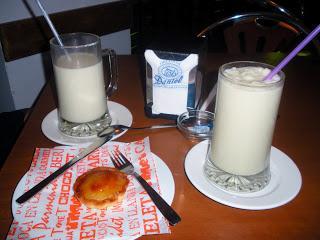
Two large glasses of horchata without sugar (left) and
horchata granizada (right), which has a frozen slushy
consistency. The dessert shown is a tart made with a
cream from tigernuts.
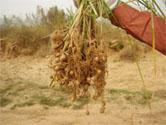
Shown here is the tigernut plant
(photo from tigernut.com),
a small tuber plant with the tigernut
itself growing in the ground. Harvested
between April and September every
year, fields and fields of it can be seen
on the northern outskirts of Valencia.
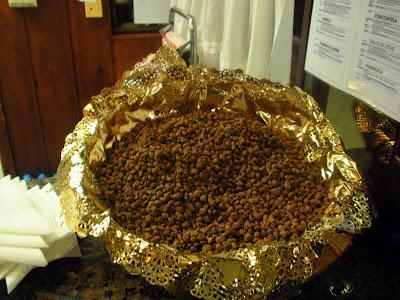
Basket of cleaned tigernuts made available for consumption for patrons at Horchatería Daniel.
Sold in small packs for individual consumption or in larger bags for making horchata.
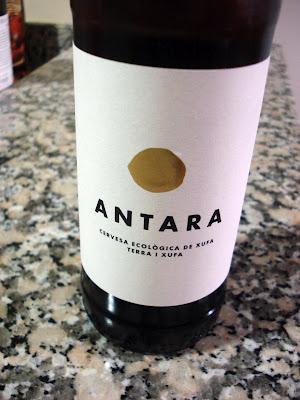
Given the regional craze for all things chufa, there is naturally
a local organic beer brewed from the tigernut, too.
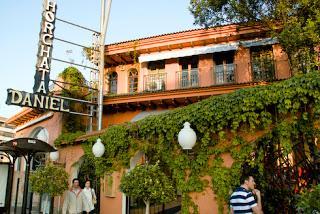
Exterior photo of Horchatería Daniel from Hola Valencia
You can find horchaterías (sit-downs dedicated to making fresh horchata) all over Valencia. The most famous among the locals is Horchatería Daniel, located in the heart and birthplace of horchata, Alboraya on aptly named Avinguda de l’Orxata (right next to the Machado metro exit on the red Line 3). [Editorial note: the people of Alboraya even jokingly call each other "chuferos".] Many Valencian city locals will flockwith the family to this small town north of the city on a lazy Sunday afternoon to drink various concoctions Horchatería Daniel makes using horchata – including with coffee, without sugar for diabetics and non-sweet lovers, and different flavors of ice cream - and desserts made of chocolate and sometimes the tigernut, too! A traditional snack to have with the ice-cold horchata is fartons, a light pastry with a light glazing on top or powder sugar. (Don’t be surprised to see everyone around dunking their fartons into the horchata!) While you’re out in Alboraya be sure to walk along Avinguda de l’Orxata to the Museum of Horchata!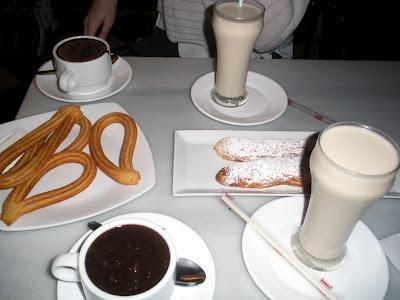
Two traditional glasses of horchata with fartons (pastries in between the horchata) and
churros (fried bread with sugar on top), the latter of which is usually eaten with thick melted chocolate.
A delicious and filling Valencian treat at Horchatería de Santa Catalina!
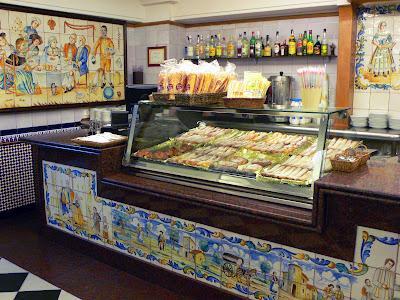
Horchatería de Santa Catalina: Beautiful and typically Valencian hand-painted tiles encompass
horchata drinkers as they enjoy it inside one of Valencia's favorite establishments.
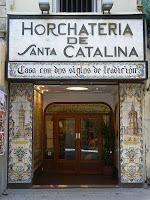
Its iconic exterior façade.
Two other equally worthy establishments where you can also try horchata are right in the cultural heart of Valencia in the Plaza de la Reina. The first, Horchatería de Santa Catalina is an establishment with over two hundred years of horchata-making tradition and its history encompasses you, literally. With ornate carvings in the ceilings on the second floor and beautiful hand-painted tile work in the entrance and walls, the building is as much of a treat as their incredible horchata. Although the choices are limited compared to Horchatería Daniel, the horchata and fartons are nothing short of perfection on a Valencian hot summer day. Right across the walkway is Horchatería El Siglo, another horchatería with two hundred years of tradition, but smaller in size. Worth a visit for the horchata alone, Horchatería El Siglo also has nice outdoor seating, perfect for a sunny day.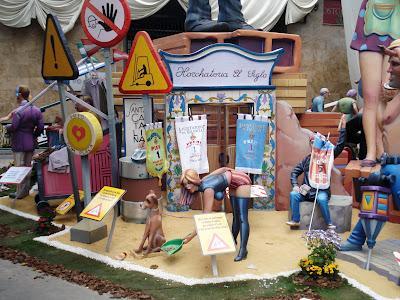
The Falla de Santa Catalina even included a miniature rendition
of the Horchatería El Siglo in its 2012 falla.
So now that you are addicted to Valencia’s liquid gold, you'll want to know how you can get more when you go home. Luckily, bottled horchata is sold all around Spain in grocery stores. Before you leave Valencia, you might also consider the fact that many horchaterías (and at the airport) sell a condensed horchata, so at home you can turn a one liter bottle into five liters worth of delicious enjoyment. Do you think bottled horchata is just not the same as that overwhelmingly delicious fresh-made hortchata? For those returning to the United States or anywhere in Europe, there is a Spanish food distributor LaTienda.com where you can order food to fill all your Spanish cravings (no need to stuff your suitcase with tigernuts!). They sell a bottled brand of horchata, Chufi

Neima Briggs, today's guest author, showing his love of Valencia
at Sevilla's Plaza de España
That said, I have found making the horchata myself fun and without question well worth the effort. At $18 a bag, you can treat yourself to four liters of horchata spread out over the course of months. Although once made the horchata will go bad after a week, the nuts stay good for two years when placed in a well-ventilated dark space (best in a dry portion of the refrigerator). The recipe is quite simple and, building from years of practice, I have include my recipe below for those adventurous enough to try it. If you are interested, click the link below and keep reading...
Neima’s Horchata de Chufa (1 Liter):
Ingredients ½ lbs of chufa nuts 1 liter of filtered water* 1 stick of cinnamon ¼ lbs of sugar** Lemon zest (½ of a lemon) *I usually use Brita filtered water after it has sat out for a day in the fridge to let the added chlorine bubble out (typical in many cities). Just like coffee and tea, the quality of water plays an important role in the flavor. **The quantity is to personal taste. Many people like an equal weight ratio of sugar to chufa. If you are diabetic or don’t like sweet, horchata without sugar is delicious, so don’t hesitate!!
Preparation
1. Wash the chufa nuts very well (the nuts are from the ground an often still have dirt on them). Soak for several minutes and scrub nuts with a rough surfaces or metal scrubber. Rinse several times.
2. Soak the chufa nuts overnight in cold water in the refrigerator. After 12-14 hours the nuts should plump up.
3. Rinse the nuts in clean water.
4. Place the clean, plump chufa nuts in the blender along with the lemon zest, filtered water, sugar and lemon zest. If you prefer, traditional recipes call for a mortar and pestle here.
5. Place the concoction in the fridge for an hour, shaking a couple times in between.
6. Run the horchata through a metal mesh strainer in a large plastic bowl. I put two layers of paper towels above the strainer to help remove the smaller particulates. Repeat straining once.
7. Pour horchata from the bowl into a funnel attached to the liter container you wish to use.
8. Enjoy homemade, delicious horchata!
For best results, place horchata in the freezer for 20-30 minutes in the freezer before consumption to make a slightly slushy, Valencian horchata mix.Store in the fridge and shake daily to help prevent the horchata from settling out. Horchata stays good for up to a week, but best in the first two days. The nuts will stay good for up to two years when stored in a well-ventilated, dark area.
